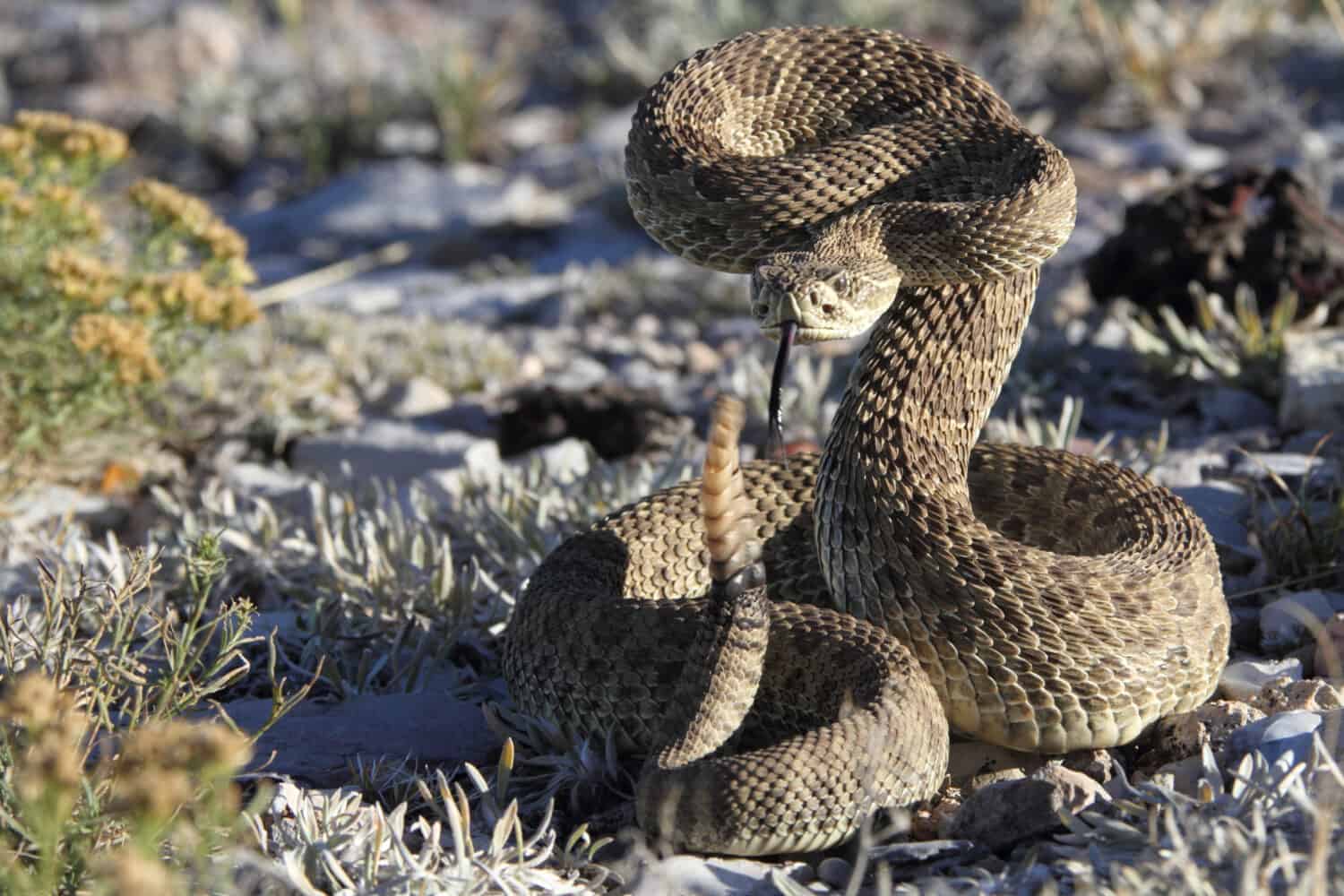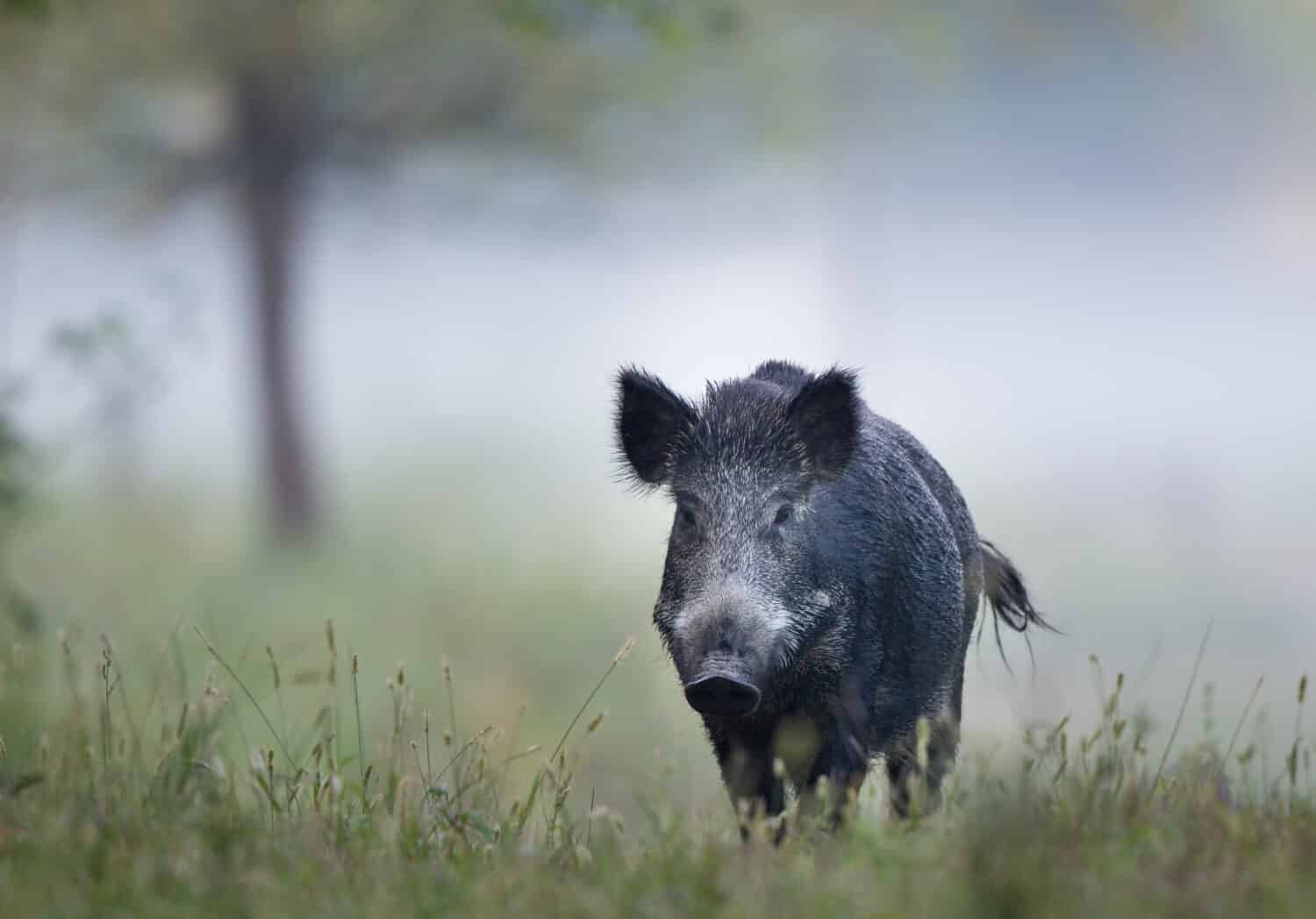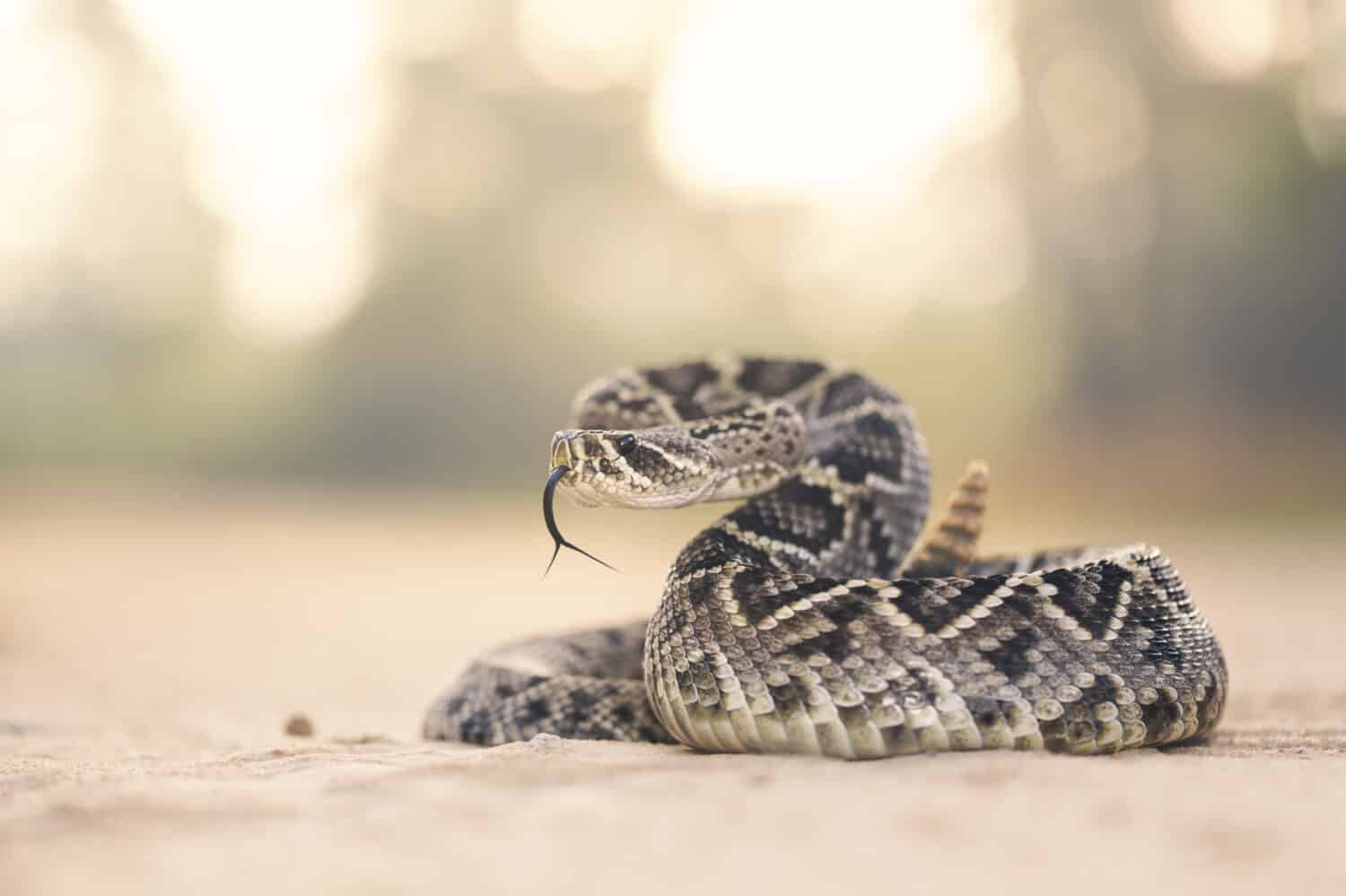
What are Defining Factors of Rattlesnakes and Wild Boars?
Wild boars and rattlesnakes exhibit distinct characteristics and behaviors that have earned them their respective reputations. Wild boars are known for their impressive size, formidable tusks, and adaptability to various habitats. On the other hand, rattlesnakes are renowned for their iconic rattle, venomous bite, and remarkable stealth and camouflage abilities. These remarkable animals showcase the diversity and wonder of the natural world, captivating our attention and reminding us of the incredible creatures that share our planet. Let’s explore in-depth why these characteristics became defining factors for each animal.
3 Characteristics Wild Boars Are Known For
Wild boars stand tall and proud when it comes to the untamed inhabitants of the forest. These majestic creatures, scientifically known as Sus scrofa, have posed a significant problem as an invasive species worldwide. However, with their impressive physical attributes, unruly nature, and remarkable adaptability, wild boars are known for several notable characteristics.
1. Impressive Size and Physicality
One cannot help but be in awe of wild boars’ sheer size and physical prowess. These robust mammals possess a muscular build characterized by a sturdy frame and a prominent hump of muscle above their shoulders. Wild boars range in size depending on their breed and location. Adult wild boars in the United States often reach lengths of roughly 3 to 5 feet and weigh approximately 75 to 250 pounds. Across Europe and Asia, wild boars can weigh anywhere from 99 to over 750 pounds. Compared to males, females, or sows, are slightly smaller on average but still command a formidable presence in their own right.
2. Formidable Tusks
Wild boars’ most recognizable feature is their large, curved tusks. These tusks are just their canine teeth. These intense tools protrude from the boar’s mouth. And the exposed parts of their tusks can measure 3.9 to 4.7 inches in length. These tusks serve multiple purposes, from self-defense and fighting for dominance to rooting in the soil for food. They are a symbol of the boar’s strength and tenacity.
3. Adaptability to Various Habitats
Wild boars are renowned for their adaptability, thriving in diverse habitats across the globe. These resilient creatures are originally native to parts of Europe, Asia, and North Africa. However, humans have introduced them to other regions, including the Americas and Australia. And thus, they have established themselves as an invasive species in many areas worldwide. According to the USDA National Invasive Species Information Center, the population of wild boars in the United States is over 6 million. Their ability to adapt to different environments has allowed them to inhabit various habitats, from dense forests and grasslands to wetlands and mountainous regions. This adaptability is a testament to their versatility and survival skills.
3 Characteristics Rattlesnakes Are Known For
In the arid landscapes of North America and South America, a slithering predator commands respect and fascination. The rattlesnake belongs to the Crotalus genus. They are known for several distinctive characteristics and behaviors that have captured the attention of both researchers and nature enthusiasts.
1. Iconic Rattle
The rattle is the defining feature that sets rattlesnakes apart from other snake species. It comprises interlocking segments made of keratin, the same material found in human nails. The rattle is situated at the end of the snake’s tail. The rattlesnake rapidly vibrates its tail when agitated, producing a distinctive buzzing sound. This auditory warning serves as an effective deterrent, alerting potential threats to the snake’s presence and deterring them from approaching.
2. Venomous Bite
Rattlesnakes possess a specialized venomous bite that sets them apart as formidable predators. Using heat-sensing pits located on each side of their head, known as pit organs, they can detect and accurately strike their warm-blooded prey, even in darkness or concealed locations. Once bitten, venom is injected into the prey, which immobilizes and aids in digestion. This venomous capability underscores the rattlesnake’s role as a top predator in its ecosystem.
3. Stealth and Camouflage
Rattlesnakes are known for their elusive nature and impressive camouflage. Their coloration often provides effective camouflage, enabling them to blend seamlessly into their surroundings and lie in wait for unsuspecting prey. They rely on their cryptic appearance and stealthy movements to remain undetected, even in open terrain. They can adopt a defensive posture when threatened, coiling their bodies and rattling their tails as a warning. This combination of stealth and warning serves as a survival strategy for these fascinating serpents.

Rattlesnakes have distinct defensive mechanisms, including their rattle.
©Harris Motion Photo/Shutterstock.com
Strengths and Weaknesses of Rattlesnakes and Wild Boars
In the vast and diverse animal kingdom, different species possess unique strengths and weaknesses contributing to their survival and adaptation. When comparing the rattlesnake and the wild boar, it becomes evident that each creature has distinct attributes that make them intimidating in their own right.
Rattlesnake Strength: Venomous Bite
The rattlesnake possesses a potent weapon in the form of its venomous bite. Its specialized venom glands produce venom that immobilizes prey and aids in digestion. The venom can quickly incapacitate the rattlesnake’s victims, ensuring a successful hunt and providing an advantage in securing sustenance. As well as serving as a protective mechanism as a last result from potential predators.
Rattlesnake Weakness: Limited Mobility
Unlike animals with limbs, such as mammals, rattlesnakes have a unique mode of locomotion known as slithering. While they are adept at navigating their environments using this method, it poses limitations in speed and agility compared to animals capable of running or leaping. This reality can make them vulnerable to faster predators or agile prey.
Wild Boar Strength: Physical Strength and Size
Wild boars are known for their impressive physical strength and size. With a muscular build and a sturdy frame, they possess the power to charge and defend themselves against threats. Their robust bodies and formidable tusks provide them with the means to protect themselves and establish dominance in conflicts.
Wild Boar Weakness: Poor Eyesight
Wild boars have relatively poor eyesight compared to other senses, such as their acute sense of smell and excellent hearing. This weakness may affect their ability to detect threats, relying more on their other senses to navigate and identify potential dangers in their surroundings.

Wild boars can be found all over the world, but they are an invasive species in many areas.
©Budimir Jevtic/Shutterstock.com
Overview of the Rattlesnake
With their distinctive rattle, venomous bite, and intriguing adaptations, rattlesnakes are fascinating creatures with impressive defensive mechanisms.
Diversity of Rattlesnakes
Rattlesnakes are a diverse group comprising around 50 recognized species worldwide. They primarily inhabit the Americas, spanning regions from southern Canada to Argentina. These species exhibit variations in size, coloration, behavior, and habitat preferences, reflecting their adaptation to different ecological niches. Some notable species of rattlesnakes include the Western Diamondback Rattlesnake, Eastern Diamondback Rattlesnake, Sidewinder, and Timber Rattlesnake.
Aggressiveness and Strength
Aggressiveness and strength can vary among rattlesnake species and even within individuals of the same species. However, as a general characteristic, rattlesnakes are not typically aggressive. They will usually try to avoid confrontation if given the opportunity. They rely on cryptic coloration and stealthy behavior to remain undetected by potential threats. However, if threatened or cornered, rattlesnakes may adopt a defensive posture, coiling their bodies and rattling their tails as a warning. Their strength lies in their venomous bite, which they use primarily for capturing prey and self-defense.
Protective Mechanisms
Rattlesnakes possess a range of protective mechanisms. First, they have a venomous bite, their primary tool for subduing prey. If threatened, however, they will employ this weapon on any animal. The potency of their venom can vary among species and even within populations of the same species. The venom is a complex mixture of proteins and enzymes. The effects of rattlesnake venom on animals can range from mild symptoms, such as swelling and pain, to more severe consequences, including tissue damage, organ failure, and, in some cases, death. However, it is essential to note that rattlesnakes typically do not bite other animals unless provoked or threatened.
In addition, their rattle produces a distinctive buzzing sound when the snake vibrates its tail. This rattle serves as a warning to potential threats, alerting them to the snake’s presence and deterring them from approaching. The rattle acts as a form of communication, allowing the rattlesnake to avoid unnecessary conflict and conserve energy. Other animals will usually avoid confronting this sound at all costs.
Size and Physical Characteristics
Rattlesnakes exhibit variations in size, with species ranging from relatively small to impressively large. The size of a rattlesnake depends on factors such as species, geographic location, and individual variation. The smallest species, such as the Pygmy Rattlesnake, can measure, on average, 16 to 24 inches in length. Meanwhile, the largest species, such as the Eastern Diamondback Rattlesnake, can reach lengths of 3.5 to 6 feet, with reports of lengths of up to 8 feet. In general, rattlesnakes have a robust body structure, with a triangular-shaped head and a thick body. Their scales are keeled (ridged), which aids in their movement across various terrains.
Strength, Temperament, and Other Characteristics
Rattlesnakes possess notable physical strength, which they primarily utilize for capturing and subduing prey. They rely on their venomous bite to immobilize and initiate the digestion of their prey, which consists mainly of small mammals such as rodents and rabbits. Rattlesnakes are highly adaptable and can inhabit a range of habitats, including deserts, grasslands, forests, and mountains. They possess remarkable camouflage abilities, allowing them to blend seamlessly into their surroundings and lie in wait for unsuspecting prey. They possess highly developed senses of smell and heat detection, which assist them in locating prey and navigating their environment.
In terms of temperament, rattlesnakes are generally non-aggressive unless threatened or provoked. They prefer to avoid confrontations and will typically retreat when given the opportunity. Most animals know to respect their space and maintain a safe distance.
Rattlesnakes are a diverse and intriguing group of venomous snakes characterized by their rattle, potent venom, and adaptability to different habitats. With variations in aggressiveness, size, venom potency, and physical characteristics, each species possesses unique characteristics that contribute to their survival and success as predators in their respective environments.

Rattlesnakes range from roughly 1 foot to up to 8 feet in length.
©Kristian Bell/Shutterstock.com
Overview of the Wild Boar
Wild boars are certainly wild animals. They can grow to considerable sizes, and their appearances can be harsh.
Diversity of Wild Boars
Wild boars encompass a range of subspecies that have adapted to different regions worldwide. Some notable breeds include the European wild boar (Sus scrofa scrofa), the Indian wild boar (Sus scrofa cristatus), and the Javan warty pig (Sus scrofa vittatus). Each subspecies has unique characteristics that have evolved in response to the specific environments they inhabit.
Aggressiveness and Strength
Wild boars can display varying levels of aggressiveness, depending on the situation and individual temperament. While they are generally non-aggressive, they can become formidable adversaries if threatened or cornered. They may charge and defend themselves in such situations using their strong bodies and sharp tusks.
The strength of wild boars lies in their muscular build and physical power. Their sturdy frames and powerful muscles enable them to exert considerable force during charging or defending themselves. The impact of a charging wild boar can be formidable and potentially dangerous to those in its path.
Regarding the power of their bite, their tusks can deliver significant damage and pose a threat when used in defense or aggression. The size and sharpness of their tusks allow them to inflict deep wounds and lacerations.
Protective Mechanisms
Wild boars possess several physical protective mechanisms that aid in their survival. One such mechanism is their thick and tough skin. Wild boars have skin covered with bristle-like hairs known as bristles, which serve to protect them against various external elements such as branches, thorns, and bites from other animals. The thick skin acts as armor, guarding them against minor injuries and reducing the risk of penetration.
Size and Physical Characteristics
Wild boars are imposing creatures with a commanding presence and distinct physical attributes. These robust mammals boast a formidable build and a strong, muscular frame. Adult wild boars across the world can range from roughly 3 to 7 feet in length and weigh anywhere from approximately 75 to 750 pounds or more. Their massive size and sturdy physique make them an imposing sight in their natural habitats.
The appearance of wild boars consists of a stocky build and a prominent hump of muscle above their shoulders. Coarse fur covers their bodies ranging in color from dark brown and black to reddish-brown and gray. The fur provides insulation and protection against external elements such as thorns, branches, and bites from other animals. Their tusks curve and can grow to significant lengths. Wild boars can use these tusks as formidable weapons if they feel threatened.
Strength, Temperament, and Other Characteristics
Wild boars possess considerable strength and resilience, contributing to their survival. They are powerful animals capable of charging and defending themselves against threats. However, their temperament is not inherently aggressive. Wild boars prefer to avoid conflicts and will typically retreat if given the opportunity. They are generally non-aggressive toward humans unless provoked or threatened.
Wild boars are highly adaptable and thrive in diverse habitats, including forests, grasslands, wetlands, and mountainous regions. Their adaptability extends to their diet, as they are omnivorous foragers. They consume a wide variety of food, including roots, tubers, berries, nuts, insects, small vertebrates, and even carrion. This versatile diet enables them to exploit available resources and contribute to seed dispersal and nutrient cycling in their habitats.
Wild boars exhibit magnificence through their size, strength, adaptability, and distinct appearance. Their robust bodies, dangerous tusks, and resilient nature make them a forceful presence in the forest. While generally non-aggressive, their power and protective mechanisms can serve them well if they feel threatened or need to protect themselves.

Wild boars are incredibly strong.
©Budimir Jevtic/Shutterstock.com
Rattlesnake Vs. Wild Boar: Who Would Win?
Considering the strengths and weaknesses of the rattlesnake and wild boar, predicting the outcome of an encounter between the two would be speculative. It depends on several factors, including the subspecies involved, the circumstances, and the element of surprise. Both the rattlesnake and the wild boar possess unique strengths and defenses that make them formidable in their own right.
Rattlesnakes have the advantage of venomous bites, which they use to subdue their prey and defend themselves. Their venom contains a potent mixture of proteins and enzymes that can cause significant harm to their victims. However, once again, it is important to note that rattlesnakes generally prefer to avoid confrontation and will typically retreat if given the opportunity.
On the other hand, wild boars possess impressive sizes, strength, and tusks. They possess powerful bodies that can deliver significant force during charging or self-defense. Additionally, their thick skin and protective bristles provide a degree of protection against external threats.
An Encounter Would Be Unlikely
In a hypothetical encounter, the outcome would depend on various factors such as the initial awareness and reaction of the animals, their proximity to one another, and their behaviors. If the wild boar were aware of the rattlesnake’s presence, it may exercise caution and attempt to avoid the snake altogether. Conversely, if the snake were to feel threatened by the boar’s approach, it would likely try to retreat and avoid direct conflict.
It is important to remember that both animals have evolved their unique characteristics and strategies for survival. Rattlesnakes rely on their venomous bites and warning mechanisms to deter threats. At the same time, wild boars utilize their size, strength, and defensive capabilities to protect themselves. In the wild, encounters between these two species would likely be rare, as both would choose to avoid the other at all costs.
Thank you for reading! Have some feedback for us? Contact the AZ Animals editorial team.







